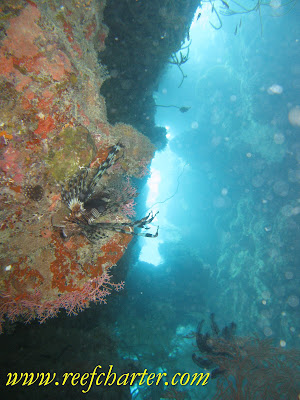The tawny nurse shark or giant sleepy shark is found in the tropical Indo-Pacific oceans between latitudes 31° N and 24° S, and reaches a length of 3.2 m.
The tawny nurse shark is a large, bulky species with a small mouth and small comb-like teeth, and with angular fins. The caudal fin is short, much less than half the length of body, and there are no ridges on the side of the body. The pectoral fins are sickle-shaped, and the spiracles are much smaller than the eye.
It is found on continental and insular shelves, from the intertidal zone down to a depth of at least 70 m. It occurs on or near the bottom in lagoons or along the outer edges of coral and rocky reefs, sandy areas near reefs and off sandy beaches. Primarily nocturnal, but may be active during the day. It prefers crevices and caves on reefs but may be found hiding in more exposed areas, forming resting aggregations, and often seen piled across or on top of one another.
It feeds on a wide variety of bottom invertebrates, small fish, crustaceans and sea urchins. It has a docile nature and has been known to allow itself to be touched, but as always it is best not to touch creatures in the wild.
Reproduction is ovoviviparous (producing eggs that are hatched within the body, so that the young are born alive but without placental attachment.) with 4 or more pups being born per litter. It survives in captivity.
The flesh is marketed fresh and dried-salted, the fins dried for the oriental sharkfin trade, and the liver is processed for vitamins and oil. The offal is processed for fishmeal, and the hide is potentially valuable for leather.
Colouration is brown dorsally, paler ventrally, with the fins slightly dusky. Nebrius ferrugineus, is a nurse shark in the family Ginglymostomatidae, the only member of the genus Nebrius.


